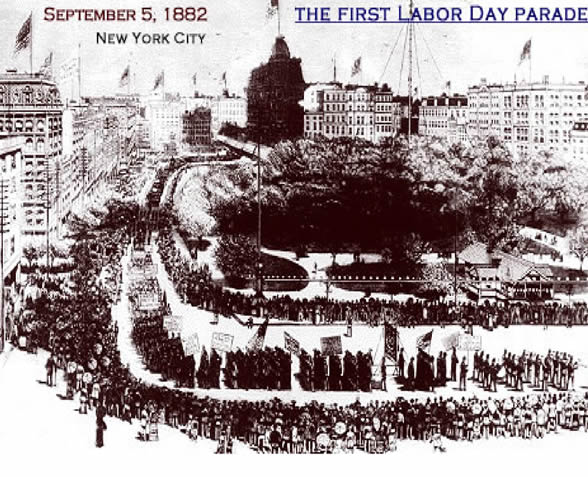Labor day: The fight for a day off
In the late nineteenth century, labor activists took to the streets to make their contributions to America’s strength known. These activists wanted the day to be a federal holiday for a day of rest.
The true meaning of Labor Day is to honor the activists who fought for this day because they believe they were spending too many hours and days on the job without rest. In the 1800’s the average worker was putting in 60-70 hours a week.
Because of this, the main advocacy from the workers started with reducing the work day to 8 hour shifts and only working 6 days a week, not 7.

For years before the federal holiday different states and labor activists still observed the holiday. On Tuesday, September 5, 1882, in New York City, the first labor day was celebrated in accordance with the plans of the Central Labor Union.
In 1885 and 1886 multiple municipal ordinances were passed to observe the holiday and through that the advocates wanted to use those municipalities as a model for state legislation.
First state legislation was introduced by New York but Oregon was the first state to recognize Labor Day in 1887. By the end of 1887 Colorado, Massachusetts, New Jersey and New York followed suit and by the end of 1894 23 more states joined the movement.
On June 28, 1894 President Grover Cleveland declared the first Monday in September annually to be Labor Day.
Most politicians and business owners were on board with this, but for selfish reasons. They thought if these workers spent less time working that they would be able to spend more time consuming. By shortening the work week, they thought, the working class would turn into a consuming class and spend their free time and extra money on entertainment and dining out more.
Traditionally, Americans celebrate Labor Day with bbq’s, family gatherings, and to many it signifies the end of summer. Many welcome this day of rest as a way to close out the summer with loved ones and welcome fall right around the corner. Regardless of how each worker decides to spend their day off, our day off was made possible by the advocacy of “the strength and esprit de corps of the trade and labor organizations” for themselves and workers across America to have fair working hours and adequate rest.

About The Author:
Brittany Macaluso is the policy and advocacy coordinator at the Lesniak Institute and a recent MSW graduate from Columbia University School of Social Work.
Categories
More Stories
- Inspiring Change: A Step-By-Step Guide to A Campus Activism Event
- Advocacy Through Social Media: Extending Beyond Your Platform
- Unwrapping the Future: The Growth of Plastic Film Recycling
- My Visit To The State House in Trenton
- Lost Childhoods: Exposing the Triad of Illegal Immigration, Child exploitation, and Abuse
- The Realities of The Homeless Crisis
- WHO RUNS THE WORLD: Women Who Advocate for Diversity, Equity, and Inclusion

